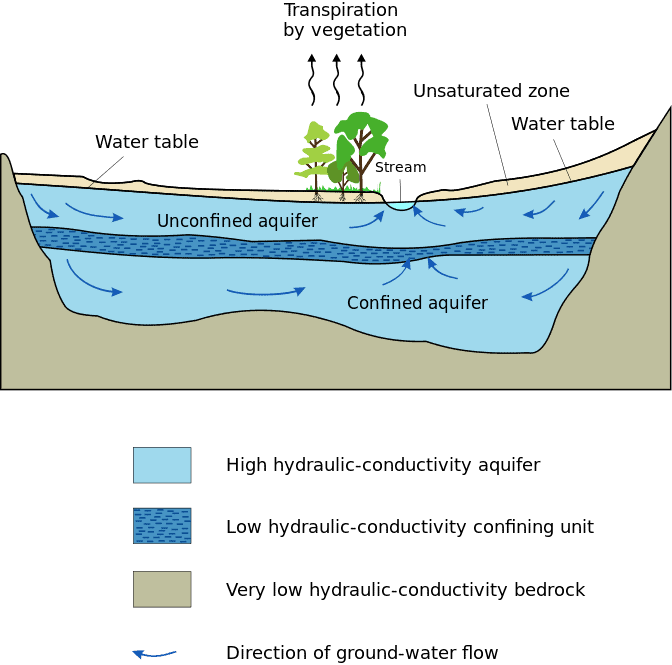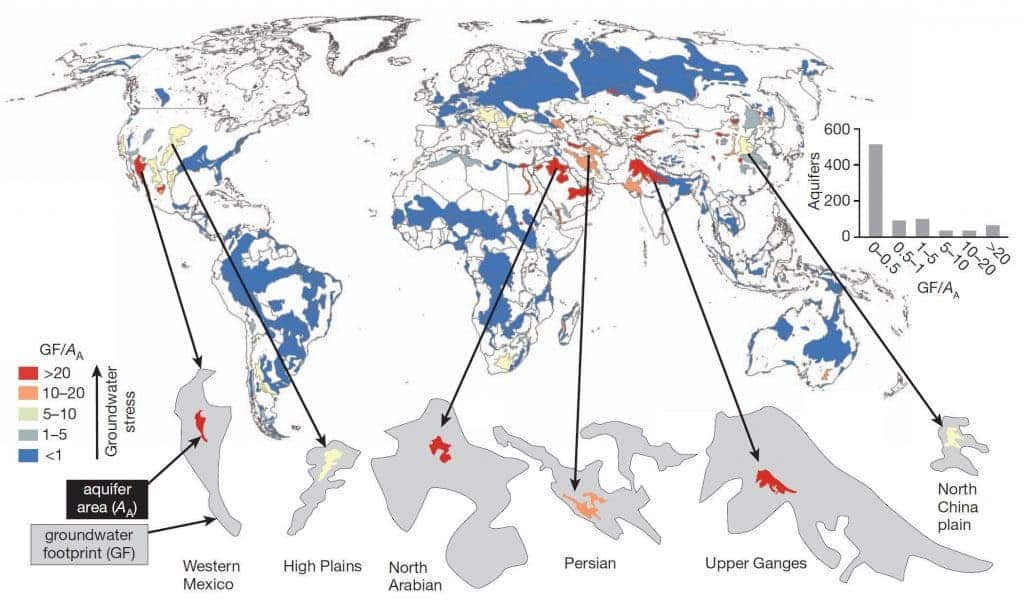We tend to think of the Earth’s water as an inexhaustible resource; after all, you learn the basic water cycle in first grade – water moves from the rivers to the oceans and then evaporates into the atmosphere and then it comes back as rain – so how could it be disappearing? Well, the reality is much more complex than that, and as two different studies showed, we may actually be heading towards a major water crisis.

An aquifer is an underground layer of water-bearing permeable rock or unconsolidated materials (gravel, sand, or silt) from which groundwater can be extracted using a water well. Basically, you can imagine that an aquifer is an immense underground water basin – and we get most of our drinking water from aquifers, so they have an immense importance for our society. The good news is that most land areas on Earth have some form of aquifer underlying them , but the bad news is that in some cases, these aquifers are being rapidly depleted by the human population through overconsumption.
“We’re kidding ourselves that it’s great and everything is fine,” according to Famiglietti, who is also the senior water scientist at NASA’s Jet Propulsion Laboratory. “Our groundwater supply is at risk because we’re not managing it properly, and we’re acting like we have unlimited water out there, and, of course, that’s not true.”
Now, NASA researchers have used data from satellites to analyze the 37 largest aquifers in the world. They found that eight were being depleted with almost no natural replenishment. Five others were “extremely stressed”. The biggest problems were in Saudi Arabia, India, Pakistan and northern Africa.
The study highlights that the way we are using our water is unsustainable – and sooner or later, we will run out of water, with no solution in sight. These studies also show that existing groundwater resources are probably much smaller than previously estimated.

“We know we’re taking more than we’re putting back in — how long do we have before we can’t do that anymore?” said Alexandra Richey, who conducted the studies as a graduate student at UC Irvine. “We don’t know, but we keep pumping. Which to me is terrifying.”
Estimating the extent of an aquifer is no easy feat; there is no direct way to do it, and satellite data is just a start. The twin satellites — known as Gravity Recover and Climate Experiment, or GRACE, satellites — orbit the Earth and measure the gravitational pull of water over time (the water has a different gravitational pull than the surrounding ground, and these fine differences can be detected. However, there is always a certain ambiguity when working with data like this. Jay Famiglietti, senior water scientist at NASA’s Jet Propulsion Laboratory and a UC Irvine professor, said that aquifers should be studied and valued the same way as precious oil reserves – in the future, they may very well become so.
“We need to drill for water the same way that we drill for other resources,” said Famiglietti, who worked on both of the studies.
But doing this isn’t easy – in order for an aquifer to exist, it has to be capped by a layer of thick, hard bedrock. Drilling through it is not easy, and estimating the extent of the aquifer is no easy feat, but it’s certainly doable.
We continue to pump in regions like the Central Valley without knowing how much water is in storage,” Richey said. “We need more study. We need better management.”


